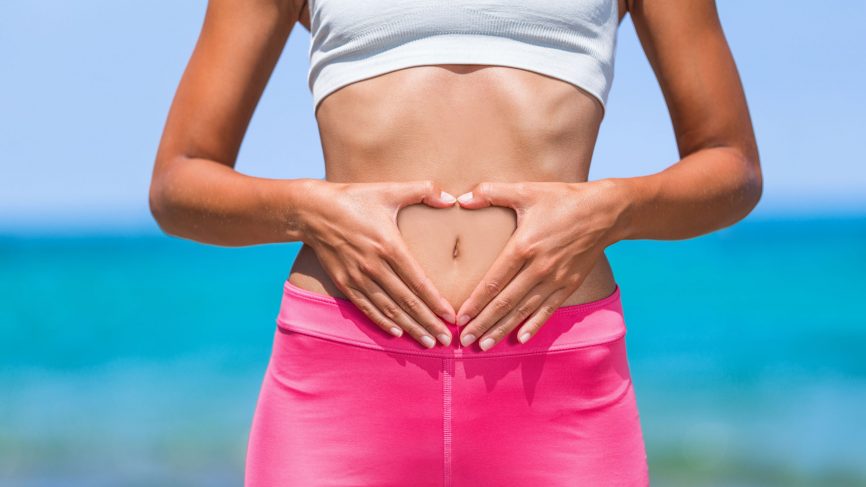
During my rounds as a resident doctor in New York City, I saw many patients with a diverse array of problems. When a patient had a heart problem, they often suffered from another problem elsewhere in the body. This is because organs of the body are all interconnected. When one suffers, another is often affected. This fact is well-known and probably not surprising to most readers. What is surprising is thinking of your skin as an organ of the body that is often affected due to internal illnesses too. Skin is actually the largest organ of your body and can suffer greatly when another organ is out of whack… especially your gut.
The inside story
Skin problems due to issues within the gut are so widely researched there is a strongly supported theory called The Gut Skin Axis. This theory is backed by innumerable studies supporting a connection between imbalances in the gut and problems with the skin. When I say gut imbalances, I don’t only mean the common stomach virus. Gut imbalances can be caused by silent bacterial overgrowth in the intestines that many people don’t even know they have. This is the case with the common skin condition rosacea and the small intestinal condition SIBO or Small Intestine Bacterial Overgrowth. While SIBO can cause overt, gastrointestinal symptoms such as vomiting, diarrhoea and weight loss, it can also cause vague symptoms such as fatigue, depression, rosacea, rashes, and acne. For those experiencing vague symptoms, they might not always seek out a doctor or the right kind of doctor for their concerns. Many patients experiencing skin symptoms such as rosacea, for example, will understandably seek out a dermatologist. While many dermatologists will treat skin conditions with topical creams and medications, few look for internal causes.
I view dermatology differently. I strongly believe in treating skin conditions from the inside out. Many of my patients will leave my consultations with prescriptions for blood work, ultrasounds, diet plans, and needed vitamins. For gut issues in particular that may be contributing to skin problems, I prescribe two common regimens: a daily super-juice and a mixture of pro and pre-biotics.
How to counter it
Your gut requires a diverse mixture of vitamins and minerals to stay healthy. For this purpose, I curated the “7 Juice” for my patients. The 7 Juice contains all of the vitamins and minerals you need to keep your skin, hair, and gut healthy. As the name suggests, there are seven key ingredients I recommend blending into a juice each morning with a liquid base of your choosing. I like a coconut water base for light days and almond milk base when craving something creamy. The ingredients include spinach, my special “super-seed” and “beautiful berries” mix (you can add seeds of your choice and seasonal berries), pomegranate, juice from an in-season citrus, honey, and a raw banana. Drinking a juice containing these ingredients each morning will provide you with ample amounts of vitamin A, vitamin C, iron, fibre, healthy fatty acids, calcium, zinc, punic acid to help with inflammation, antibacterial properties, loads of antioxidants, and probiotic properties for intestinal health.
The ingredients that give the juice probiotic properties is the raw banana. Probiotics are living, good bacteria that you consume through foods like kimchi, yoghurt, and kombucha. Consuming these good bacteria will assist to control bad bacteria within the digestive tract.
Probiotics vs prebiotics
For many of you, the above information on probiotics is a review. There’s a good chance you have heard of probiotics and their importance in maintaining digestive health in the past. However, few of you have probably heard of the lesser known prebiotics. Prebiotics cannot be digested or destroyed by the body. Through this process, they facilitate growth and nourishment of good bacteria which balances the good to bad bacteria ratio.
Probiotics, unlike prebiotics, can be destroyed by the body. Because of this, it is best to consume a mixture of pro and prebiotics daily. By doing this, you will be eating good bacteria along with a medium to fertilise and facilitate its growth and positive affect on your gut. The easiest-to-find prebiotic containing foods are garlic, onion, leeks, pickled fruits and vegetables, and, surprisingly, chicory root which is found in many instant coffees. All of these ingredients are staples of the Indian diet as well as diets around the world making them easy to incorporate into your daily routine.
Although I recommend you see a dermatologist for any skin condition you are suffering from, adding a healthy balance of vitamins, minerals, pro and prebiotics into your diet is a good start for everyone. For some, the above changes will lead to more energy, weight loss, and healthier GI functioning. For others, you might just find these simple changes will correct facial redness you have been battling, patches of dry skin, pimple-like spots on the face, and rashes too. There’s no downside.
[“Source-vogue”]
